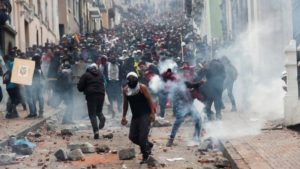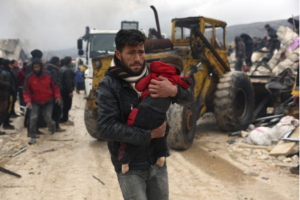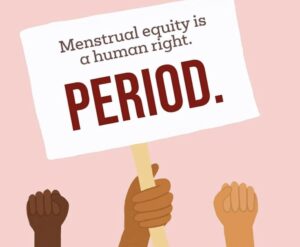In 1900, when New York City was starting to experience an outbreak much smaller in scale compared to the current COVID-19 outbreak, the city learned of an important kind of germ carriers: asymptomatic carriers. The first documented carrier was the infamous Mary Mallon, or ‘Typhoid Mary.’ Mallon was a chef who showed no symptoms yet proved capable of infecting others. She worked as a family chef for eight wealthy families sequentially before a deadly pattern started to emerge; each of those families suffered from Typhoid shortly after Mary’s employment. It took a while for people to connect the dots, but by 1907, there were 600 people dead from typhoid related causes. However, attempts at instructing Mary to self-quarantine fell on deaf ears; shortly after her mandatory quarantine, Mary went right back to being a chef. In short, people really don’t like being told to self-quarantine, and society can’t afford to rely upon trusting that people will self-quarantine. Is there a more effective alternative to this? From patient detection to minimising infection?
Fast forward to 2020, we have a lot more at stake now. as compared to 1900. There are 9,000 COVID related deaths here in the U.S. alone, most of which happened a week ago. In order to fight against COVID-19, we need to be able to identify it. However, it is flu and allergy season right now — with which a lot of the symptoms for COVID-19 overlap.
According to the CDC, the symptoms show up around 4-7 days after exposure for median patients, with the longest being 14 days. The flu, on the other hand, has its symptoms show up just a day after exposure. The symptoms for COVID-19 are:
- Loss of smell
- Dry cough
- Fever
- Muscle ache
These symptoms can easily be dismissed as either a cold or pollen allergy — until more severe symptoms of the virus show up:
- Difficulty breathing (due to fluid filling up in the lungs)
- Loss of lucidity (due to lack of oxygen in the brain)
- Temperatures of 103 or higher
However, by then, patients need to be hospitalised and they undoubtedly have already transmitted the virus to people. It is too late to prevent contact and probably too late to save the person too.
From a policy standpoint, COVID-19 is a nightmare to plan against for a number of reasons:
- It is hard to detect people from the earliest stage (asymptomatic stage), given its generality.
- We don’t always know where we need to send resources or when we need to anticipate a spike in cases.
- Quarantines are only as effective as the willingness of the people to follow it.
All of the problems could be addressed, or at least greatly alleviated, by mass testing. There are already testing kits available, with some being more successful than others. Admittedly, there are a few shortcomings with some of the testing kits, for instance, in the U.S., the kits have a 30 percent false-negative rate, meaning the test kit failed to register someone who has the virus 30 percent of the time.
In South Korea, there was a mass commission by the government for companies to produce testing kits with the promise of accelerated release and contract. The result was an overnight proliferation of tests everywhere. Thus, everyone, not only those suspected of having COVID-19, but also those who are otherwise asymptomatic, got tested for relatively cheap prices (free if you show symptoms) and fast procedures. Bottom line is that though discerning COVID-19 from allergies and the common cold is hard, it is not impossible, and I think it is worth the effort.
Reasons being that people could then get tested frequently (ideally on a biweekly basis for those in epicenters), hence raising self-awareness. But perhaps more importantly, there is a large database for epidemiologists to refer to for resource allocation. Quarantines are costly: easily demonstrated by the falling stock market and a 1.5 trillion dollar bill to ameliorate financial pressures from quarantine here in the U.S.
Courtesy of MarketWatch, Dow Jones
This puts all the more onus upon our decisions to impose a quarantine. Are we imposing it at the right time? How long should it be? Is it in the right area? How many resources do we need to pump in for this quarantine? All these important questions could only be properly addressed once we can adequately estimate the number of asymptomatic carriers. Roger Klein, a former advisor to the U.S. Department of Health and Human Services rightly said ‘you cannot fight what you cannot see.’
An immediate benefit of having insight on who is getting infected is that quarantines and lockdowns do not necessarily need to be the only options available to epidemiologists. For instance, cities could surgically isolate asymptomatic cases whilst monitoring their oxygen level– mitigating much of the early unnecessary infections along with personal misery by treating patients early. This has been the case with South Korea and with Taiwan; both countries boast some of the best results from utilising data-driven policies. As a result, neither country has implemented lockdowns or quarantines ergo saving them money and from misery.
Aside from mitigating massive costs, it represents a nice symbolic gesture of personal liberty. Kim Woo-Joom, an infectious disease specialist at Korea University, stated: ‘South Korea is a democratic republic, we feel a lockdown is not a reasonable choice.’
The task involved to sift through thousands if not hundreds of thousands of infected patients’ travel and contact will prove tedious. However, this is a lot cheaper and more effective than issuing a blanket lockdown. South Korea, for instance, aggressively amped up its contact tracing for the disease. South Korean specialist, Dr Ki says that ‘we did our epidemiological investigations like police detectives, later we had laws revised to prioritise social security over individual privacy at times of infectious disease crises.’ The Korean Government went through security camera footage, GPS, and even credit swipes to conduct an epidemiological investigation. This enabled widespread texting to areas with high contact to inform them real-time, of exactly where and when COVID-19 patients went– incentivising people in the area to get tested and avoid clusters strategically. In other words, instead of Typhoid Marys avoiding people (on top of assuming everybody has the virus), we stop people from becoming Typhoid Marys.
However, there is another question that needs answering. When can we declare victory? Some countries have finally seen some success out of quarantine but once they have loosened restrictions, the virus came back with vengeance. Hong Kong and Singapore, for instance, saw a sudden uptick in cases once restrictions eased.
Using a pool of testing data and tracing can once again help us understand the trajectory of the virus. As it turns out, it is important to know not only when to implement a quarantine, but also when to de-escalate. In a time of crisis, resources are scarce; it is imperative to not let any go to waste. Testing data allows us to make wiser and cheaper decisions.
Typhoid Mary’s are hard to find and even harder to restrain. Fortunately, today, we have the necessary tools and roadmaps to help us do both.



